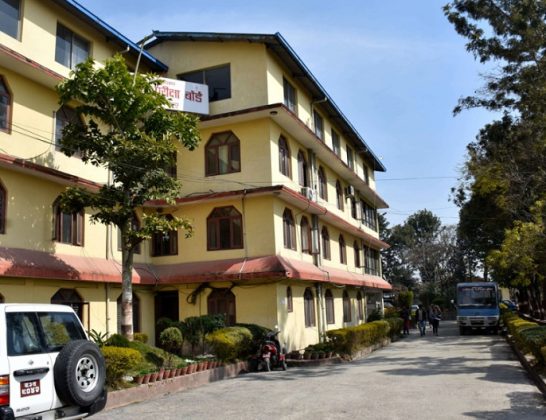Global Focus on Land Restoration and Resilience Marks World Environment Day 2024
Kathmandu : une 5th is celebrated as World Environment Day each year, with a unique theme.This year’s theme, “Land Restoration, Desertification, and Drought Resilience,” is accompanied by the slogan “Our land. Our future. We are #GenerationRestoration.”

The theme underscores the urgency of restoring healthy land, preventing desert expansion, and managing water shortages. These interrelated challenges threaten food security, biodiversity, and accelerate climate change. Experts highlight that land degradation, desertification, and drought are critical threats to the planet’s health.
The conversion of cultivable land into a desert, known as desertification, impacts billions of people globally. According to them, the frequency and severity of droughts—prolonged dry spells of weather—are rising as a result of climate change, further taxing our ecosystems.
In Nepal, the frequency of droughts has markedly increased since 2000, noted Dr. Madan Sigdel, Associate Professor at Tribhuvan University’s Central Department of Hydrology and Meteorology. From 2000 to 2020, droughts have become more common in agricultural zones such as Siraha, Saptari, and Dhanusa, shifting the drought narrative from western Nepal. “Earlier, droughts were irregular,” Dr. Sigdel observed, emphasizing the changing patterns.
The Bheri-Babai Diversion Multipurpose Project in Surkhet District, Karnali Province, and the Sunkoshi-Marin Diversion Multipurpose Project in Madhesh Province aim to provide year-round irrigation but remain under construction. Until these projects are operational, major agricultural regions will continue to face drought impacts on crop production.
Dr. Sigdel’s study on “Drought Monitoring over Nepal for the Last Four Decades and Its Connection with Southern Oscillation Index” highlights the importance of understanding the link between drought and the El Niño-Southern Oscillation (ENSO) for effective water resource management. Droughts have occurred in both El Niño and non-El Niño years, with 1992 and 2015 being particularly severe, affecting over 44 percent of the locations of the country.
Monsoon rainfall variability in Nepal is influenced by local, regional, and large-scale atmospheric circulation from the Indian and Pacific Oceans, correlated with La Niña/El Niño years, Dr. Sigdel explained.
Dr. Hemu Kafle from the Kathmandu Institute of Applied Sciences pointed out that changing rainfall patterns will hinder agricultural production and lead to water scarcity. She emphasized the need for tree-based agriculture in urban and semi-urban areas and rainwater harvesting to revive streams and land resources.
Nagendra Prasad Yadav, a forest environment expert, stressed the need for a comprehensive restoration campaign in the degraded Chure region. He noted that planting trees alone is insufficient, as it takes decades for them to mature. Instead, he advocated for planting drought-resistant species, bushes, and grasses to provide immediate shade and long-term land restoration. Yadav warned that continued degradation of the Chure range could turn the fertile Terai belt into a desert unless deforestation and riverbed material extraction are controlled.









Comments